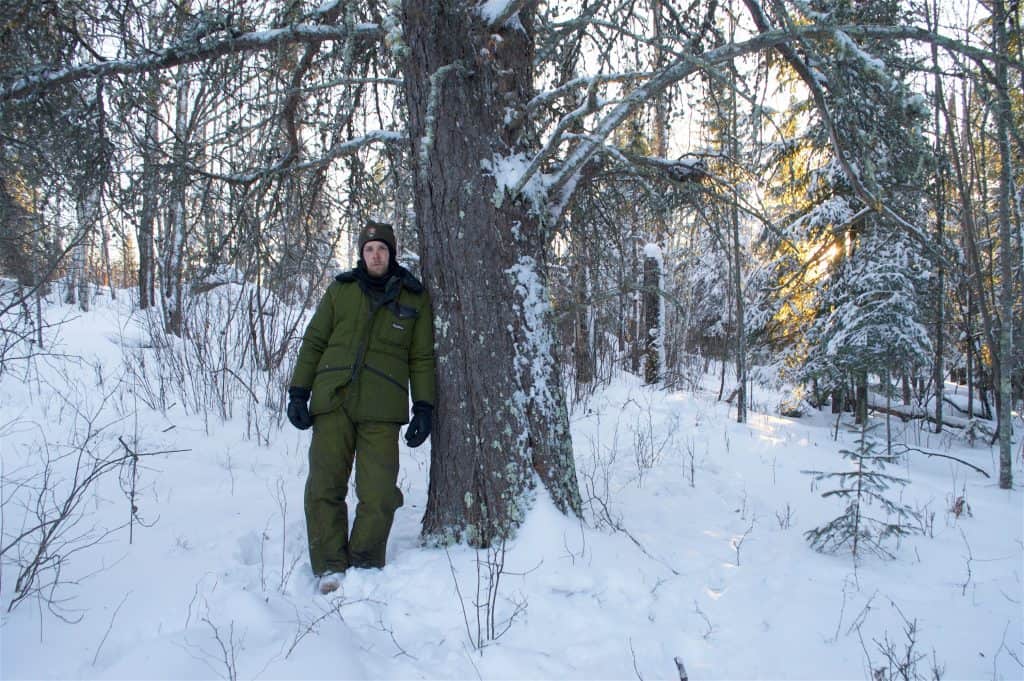
A huge specimen of jack pine (Pinus banksiana) growing on the northern border of Minnesota has been named the biggest of its species in the United States. The 73-foot tall tree with a trunk almost seven feet around was recently added to American Forests’ Champion Trees national register.
The tree is growing near the shoreline of Moose Bay, on Namakan Lake, in Voyageurs National Park.
It was actually a wolf that alerted park researchers to the presence of the tree. As part of an ongoing study of the relationship between wolves and beavers, wildlife biologists have put GPS transmitters on several wolves. They visit sites where the animals spend more than 20 minutes to see if they can find evidence of a kill, enhancing understanding of the predators’ food preferences.

That’s when researcher Austin Homkes saw the massive tree, alerting his colleague Tom Gable.
“Since we cover so much ground with our wolf research, we keep track of big trees,” Gable said. They came back later to measure it, and quickly realized it was special.
“That is a huge jack pine, that is going to crush the record,” he recalls thinking. “For a jack pine it’s huge. It’s got this huge crown, sometimes they look really scraggly and weathered.”
Gable and his colleagues have located two other state champion tree species in or near Voyageurs: an 80-foot tall balsam fir, and an 85-foot black spruce.
After measuring the tree, they contacted the Minnesota Department of Natural Resources. A forester visited the tree and confirmed the measurements, and it was submitted to American Forests. Champion trees are scored on three criteria: height, crown spread, and trunk circumference. The previous national champion jack pine was 30-40 points smaller.
Born of fire
Jack pine often grow in very poor soils, which is why most stay small and scraggly.
They are abundant in the boreal forest, though critically dependent on fire to reproduce. Their cones are sealed with resin until fire heats them, opening the cones and releasing the seeds.
The trees provide shelter and food for a variety of animals, including snowshoe hares. The endangered Kirtland’s warbler has been found to only nest in jack pine barrens in Michigan.
Jack pine wood is moderately hard and heavy, and is used for pulpwood, lumber, telephone poles, fence posts, mine timbers, and railroad ties.
Park protection
It’s probably not a coincidence that the record-breaking tree was found in the protected National Park. The previous state champion jack pine was cut down in 2015 by loggers clearing land for a taconite mine expansion.
That tree, in the town of Mountain Iron, was measured just two days before it fell. Its trunk was about five inches bigger, but it was shorter and had a smaller crown than the Voyageurs tree.
“Being a state Big Tree doesn’t protect the tree from being cut down,” Big Tree program coordinator Jennifer Teegarden said. But being in a National Park does.
The previous jack pine state champion was located in Lake Bronson State Park in northwestern Minnesota. It died of natural causes in 2014.

